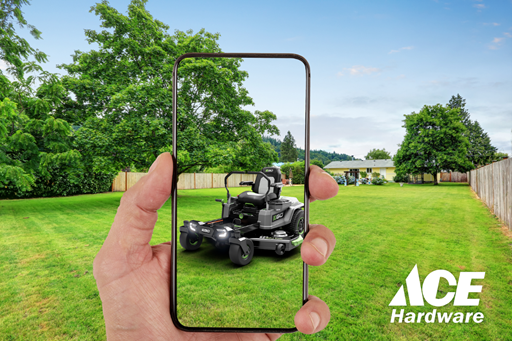Visualize your dreams with your phone.

You’ve seen stories about people visualizing a sofa from Ikea in their living room, but what about more prosaic and sometimes awkward and esoteric things like a 40-foot ladder, a barbecue grill, or a riding lawn mower?
One of the great joys I get is going to the hardware store and seeing all the stuff. And every time I do, I am amazed and astonished when I ask one of the people, “Where do you keep…?” and they tell me. Precisely. None of those people are young, and they are walking, talking index systems that know where bolts, bandages, and banacranes are—not that I’ve ever had a need for a banacrane, but if I did, they’d know what section and shelf it was on.
Now suppose you could put all that stuff in your phone, and then when you thought a banacrane was just what was needed for the job, you could call it up and see if it would fit through your door or on the roof of your car.
Using a proprietary technology stack for production and content management, along with the Khronos glTF standard for 3D objects, the folks at Epigraph figured out how to do it. Then they showed it to Ace Hardware, and when the marketing and managers at Ace stopped saying “holy sh..,” they said they wanted it, like yesterday.
A pilot was set up with EGO lawn equipment and Weber grills, and six months later, it was accessible to all brands and products on acehardware.com. If you go here and click “View In Your Space,” you’ll be able to see how it works. To see how it works in furniture, you can play with a leather restoration hardware chair here.
Epigraph’s webAR runs on Android and iOS; desktop users are shown a QR code they can scan to go directly to the experience.
What do we think?
I’ve been working in AR for almost three decades—yeah, it’s been around that long. Whenever I would try to explain it to someone, it was tedious—it is said about me, don’t ask Jon what time it is because he’ll tell you how to build a watch. Therefore, I was delighted when Pokémon came out. After that, when someone would ask me about AR, I didn’t have to tell them how one is built, I’d just say—it’s Pokémon. Epigraph is Pokémon in a hardware store. It’s that easy to understand and use. Of course, the folks at Khronos are going to say it’s that easy because of glTF, and that is partially true (see “Khronos Group expands glTF”). Khronos released a set of physically-based rendering material extensions to support the glTF standard for publishing 3D assets on the Web and other digital platforms, including mobile devices, PCs, and the cloud, and that was exactly what Epigraph needed to carry the ball over the goal line.
So now you don’t have to make two or three trips to the hardware store, trying to get the right part, as much fun as that might be. Now you can find it all on your phone and make one trip or order it online and be confident that when it comes, it will be the right size and threaded in the right direction. And if you can’t find what you need, come on over to my place and root around in my junk box and unreturned things.





